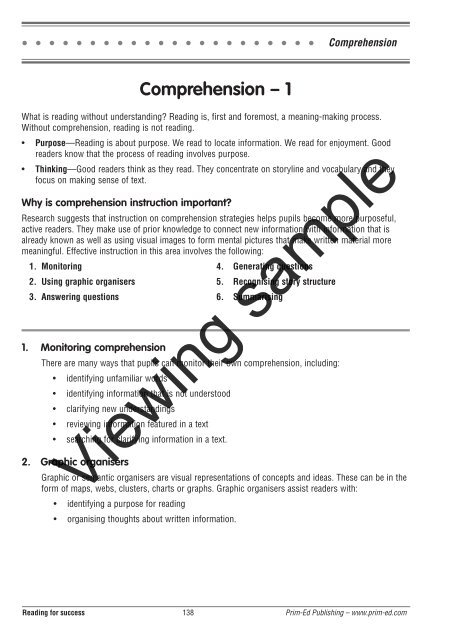PR-6218UK Reading for Success - Book 3
You also want an ePaper? Increase the reach of your titles
YUMPU automatically turns print PDFs into web optimized ePapers that Google loves.
Comprehension<br />
Comprehension – 1<br />
What is reading without understanding? <strong>Reading</strong> is, first and <strong>for</strong>emost, a meaning-making process.<br />
Without comprehension, reading is not reading.<br />
• Purpose—<strong>Reading</strong> is about purpose. We read to locate in<strong>for</strong>mation. We read <strong>for</strong> enjoyment. Good<br />
readers know that the process of reading involves purpose.<br />
• Thinking—Good readers think as they read. They concentrate on storyline and vocabulary and they<br />
focus on making sense of text.<br />
Why is comprehension instruction important?<br />
Research suggests that instruction on comprehension strategies helps pupils become more purposeful,<br />
active readers. They make use of prior knowledge to connect new in<strong>for</strong>mation with in<strong>for</strong>mation that is<br />
already known as well as using visual images to <strong>for</strong>m mental pictures that make written material more<br />
meaningful. Effective instruction in this area involves the following:<br />
1. Monitoring 4. Generating questions<br />
2. Using graphic organisers 5. Recognising story structure<br />
3. Answering questions 6. Summarising<br />
1. Monitoring comprehension<br />
There are many ways that pupils can monitor their own comprehension, including:<br />
• identifying unfamiliar words<br />
• identifying in<strong>for</strong>mation that is not understood<br />
• clarifying new understandings<br />
• reviewing in<strong>for</strong>mation featured in a text<br />
• searching <strong>for</strong> clarifying in<strong>for</strong>mation in a text.<br />
Viewing sample<br />
2. Graphic organisers<br />
Graphic or semantic organisers are visual representations of concepts and ideas. These can be in the<br />
<strong>for</strong>m of maps, webs, clusters, charts or graphs. Graphic organisers assist readers with:<br />
• identifying a purpose <strong>for</strong> reading<br />
• organising thoughts about written in<strong>for</strong>mation.<br />
<strong>Reading</strong> <strong>for</strong> success 138 Prim-Ed Publishing – www.prim-ed.com


















